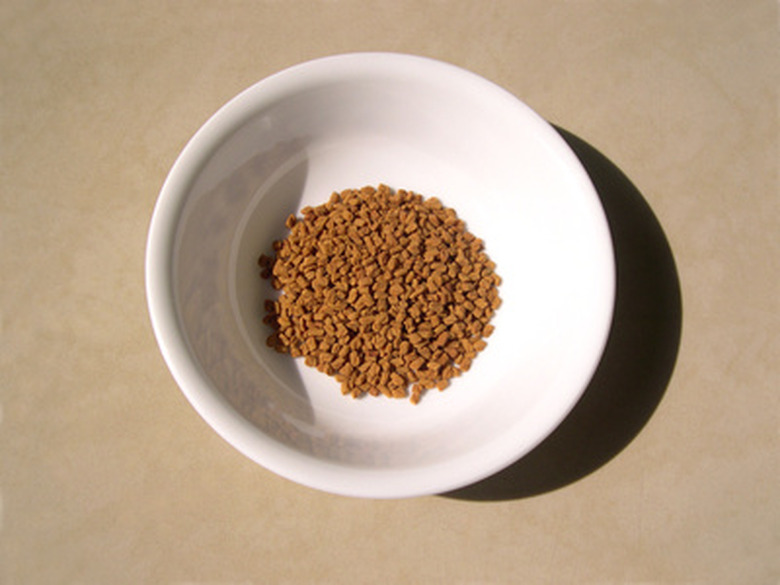Life Cycle Of A Fenugreek Plant
The annual fenugreek (Trigonella foenum-graecum L), widely used as a medicinal plant, animal forage and culinary additive, grows native in Asia and southern Europe. Utilized fresh or dried, the leaves of the plant offer seasoning flavor for cheeses, rum and maple syrup and can also be used as a coffee substitute. Throughout history the plant has been used as a edible fiber, for gastrointestinal problems, diabetes management, treatment of fevers, sore throats and cancer treatment, according to the Purdue University.
Germination
Fenugreek seeds appear encased in yellow pods in the fall and germinate rapidly. Tiny seedlings begin to develop within three days of planting fenugreek seeds. Fenugreek seeds prefer to be planted no more then 1/4 inch under the soil in order to germinate successfully. The seeds are also frost sensitive and should be planted after all danger of frost has passed.
- The annual fenugreek (Trigonella foenum-graecum L), widely used as a medicinal plant, animal forage and culinary additive, grows native in Asia and southern Europe.
- Fenugreek seeds prefer to be planted no more then 1/4 inch under the soil in order to germinate successfully.
Requirements
Fertile, well-draining soil offers the ideal environment for rapid fenugreek plant growth. Plants should be spaced at least 6 inches apart. As the plant grows, it produces a strong smell that is reminiscent of maple syrup. It prefers to be planted in full sunlight. Once established, it is drought tolerant.
Growth
Fenugreek grows up to 2 feet high. It produces clover-shaped foliage that can be picked at any time, but young leaves tend to be less bitter tasting. An annual legume, the plant has the ability to fix nitrogen into the soil as most legumes do. This unique trait makes the soil surrounding the fenugreek rich in nutrients. The leaves and stem offer valuable nutrients such as potassium, ascorbic acid, proteins and niacin.
- Fertile, well-draining soil offers the ideal environment for rapid fenugreek plant growth.
- An annual legume, the plant has the ability to fix nitrogen into the soil as most legumes do.
Flowering and Seed Production
In the early to midsummer fenugreek begins to produce flowers. Flowering usually occurs 110 to 120 days after planting fenugreek. The flowers are small and white. Following flowering, yellow seed pods appear. The seeds are ready for harvest 30 to 35 days after flowering.
Harvesting
Harvest the entire seedpod in early to mid fall before the seeds are dispersed. Place the seed pods into an airtight container after harvesting to dry. The seeds tend to be quite bitter to the taste. They can be eaten raw or dried. In the fall, the plant dies.
- In the early to midsummer fenugreek begins to produce flowers.
- Harvest the entire seedpod in early to mid fall before the seeds are dispersed.
